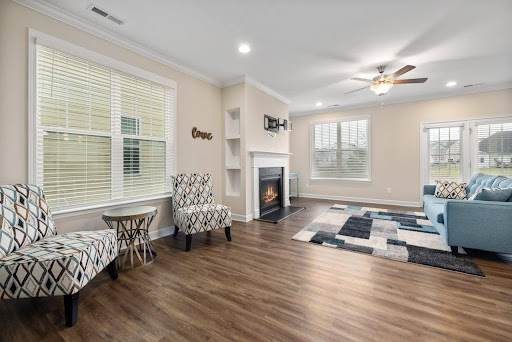Light shapes everything about how your home feels. Too dim, and you’re squinting at your phone. Too bright, and the kids complain about harsh glare during homework time. When you’re juggling work, family, and everything else, the last thing you want is to wrestle with complicated lighting systems.
Managing light doesn’t have to be another item on your endless to-do list. Small changes can transform how your space looks and feels while saving you money on energy bills. These four strategies work for any home, whether you rent or own, and most take just minutes to implement.
Maximize Natural Light through Home Windows
Your windows are doing more heavy lifting than you think. Clean glass makes an immediate difference. Dust and grime block more light than you’d expect, so a quick wipe-down can brighten rooms instantly. Correct home windows placement matters too.
If you’re rearranging furniture, pull sofas and desks closer to windows. Natural light reduces eye strain better than any bulb, and it’s completely free. Light-colored curtains or blinds let sunshine filter through while maintaining privacy. Consider the time of day each room gets the most natural light.
Morning sun hits east-facing windows, while afternoon light floods west-facing ones. Match your activities to these patterns when possible.
Smart Lighting Solutions
Motion sensors eliminate the daily dance of fumbling for light switches with full hands. Install them in hallways, bathrooms, and entryways where you’re constantly moving through. Dimmer switches give you control without complexity.
Bright light for cleaning, soft light for dinner, and everything in between. Smart bulbs take this further, letting you adjust brightness from your phone or set schedules so lights turn on before you get home. Timer switches work wonders for outdoor lights and basement areas.
Set them once, and forget about manually switching lights on and off.
Automated Window Treatments
Automated blinds and curtains sound fancy, but basic versions are more affordable than you might think. Program automated window treatments to open with sunrise and close at sunset, maximizing natural light during the day and providing privacy at night.
If automation isn’t in your budget, develop a simple routine. Open blinds when you make morning coffee, close them when you start dinner prep. Seasonal adjustments matter too. Summer sun sits higher in the sky, while winter light comes in at lower angles.
Adjust your window treatments accordingly to make the most of available natural light throughout the year.
Declutter Around Light Sources
Stuff accumulates around lamps and windows without you noticing. Books stacked on windowsills, decorative items crowding table lamps, and furniture blocking light paths all dim your space unnecessarily.
Take five minutes to clear surfaces near light sources. Move that plant away from the window if it’s creating shadows. Relocate the pile of mail that’s somehow ended up next to your desk lamp. Clean lampshades while you’re at it.
Fabric shades collect dust, and glass ones get fingerprints and water spots. A clean shade can increase light output significantly. Consider your wall colors too. Light colors reflect more illumination around the room, while dark walls absorb it.


